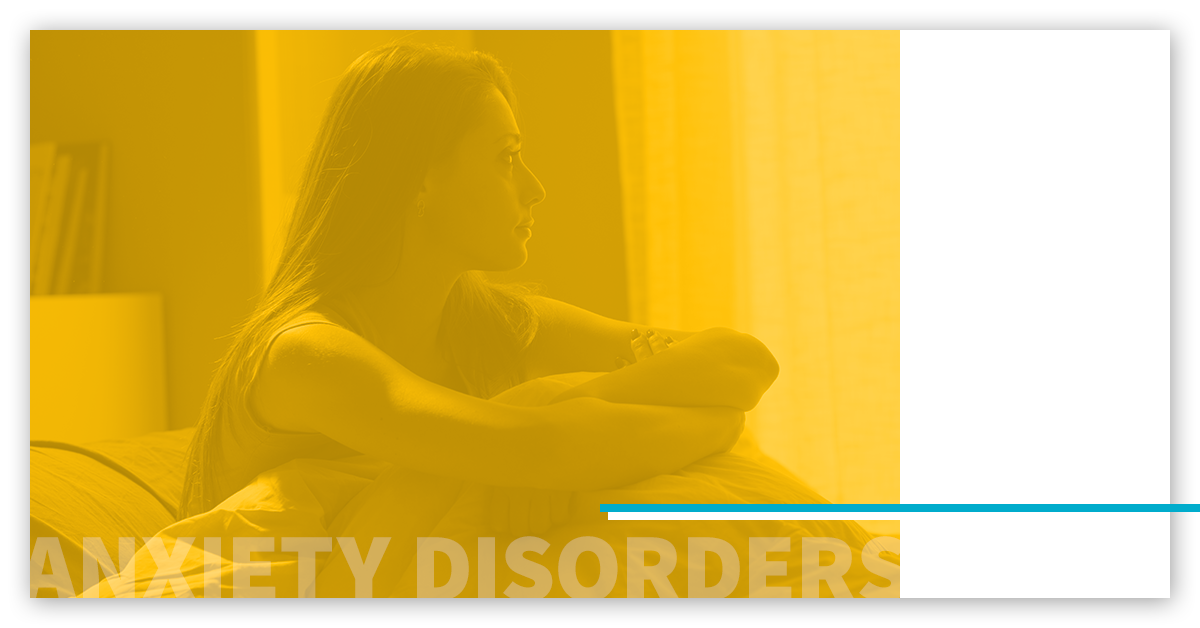Anxiety Disorders

LISTEN TO THIS ARTICLE:
People with different types of anxiety disorders can struggle with fears and worry about a wide variety of things. These can range from snakes to open spaces, from social situations to simply leaving their homes. Anxiety disorders can cause people to greatly overestimate the actual danger posed by these things and attempt to avoid them. As a result, their lives may become progressively restricted.
What is Anxiety?
Fear is the emotional reaction we have to danger. Likewise, anxiety is the apprehension people experience thinking about possible future danger.
These are natural responses that have kept us safe from real danger throughout human evolution. A life without any fear and anxiety probably would not last long.
Anxiety and fear bring on the “fight-or-flight” response. An elevated heart rate, increased blood pressure, tensed muscles, wide open eyes, and heightened senses ready the body for an encounter with danger. These responses served humans well when our lives were threatened on a daily basis by predators and other threats in the environment.
However, now we live relatively safe lives and lack many of the natural threats in the world that our predecessors feared, but we still have the predisposition to be wary. Most of the time we have been able to adapt. We know that the people at our new job are not out to get us and that leaving the home is perfectly safe.
But for some people, a combination of powerful genetics and the right environment can prime the natural fear responses to react to things that are really quite safe.
What are the Symptoms of Anxiety?
Anxiety has a number of hallmark signs and symptoms that people with these disorders display. These fit into two large categories: physical and mental.
Physical symptoms:
- Increased heart rate
- Muscle tension
- Increased breathing rate
- Sweating
- Muscle tension
- Shaking
- Nausea and stomach upset
- Trouble sleeping
Mental symptoms:
- Sense of imminent danger
- Nervousness and panic
- Trouble concentrating
- Preoccupation with source of anxiety
- Avoiding sources of anxiety
What are the Anxiety Disorders?
Generalized Anxiety Disorder is a state of chronic, widespread anxiety about many possible life areas. These people just seem to be always worried about something. They worry not only about specific things but also as a general defense mechanism.
Social Anxiety Disorder makes people feel paralyzed with fear in social situations. They feel as if all eyes are on them, as if people are scrutinizing every word and action, waiting to judge any mistake. It can can lead to panic attacks and cause people to avoid social situations.
Panic Disorder consists of panic attacks. These are unexpected, overwhelming waves of the emotional and physical manifestations of anxiety. People feel their chests pound and their breath shorten. Sensations of doom and dying race through their minds. All of this terror comes on rapidly and peaks in 10-20 minutes.
Agoraphobia causes people to suffer from significant fear and anxiety when they encounter any of a variety of public situations. This fear can be extremely restricting and many people are unable to work or socialize effectively. They appear visibly anxious in public places.
Specific Phobia involved intense fear and sometimes panic attacks in the presence or anticipation of certain triggers. These triggers can come from a wide variety of categories, and the resulting anxiety far exceeds any real danger. People are aware that their fear is unwarranted but are unable to control it.
Separation Anxiety Disorder leads people to experience significant fear and worry when leaving their home or losing the company of a someone to whom they are emotionally bonded. In children, this appears as crying, tantrums, and clinging behavior, where the child tries to remain in close physical proximity to the parents at all times, even within the home.
Who gets Anxiety Disorders?
One in five Americans
Anxiety disorders are the most common type of mental illnesses in America. They strike over 40 million people in the United States every year – that’s almost one in five.
Depression, too
Anxiety and depression very commonly occur together. Half of all people with depressive disorders also have an anxiety disorder.
Neuroticism
This personality trait describes people who are more likely to view new environments as dangerous. They are more likely to be fearful and develop different types of anxiety disorders.
Stressful childhood
Various kinds of trauma early in life like neglect or abuse can prime the brain for anxiety disorders by increasing anxiety sensitivity.


 Learn
Learn ID Symptom
ID Symptom News
News Find Help
Find Help